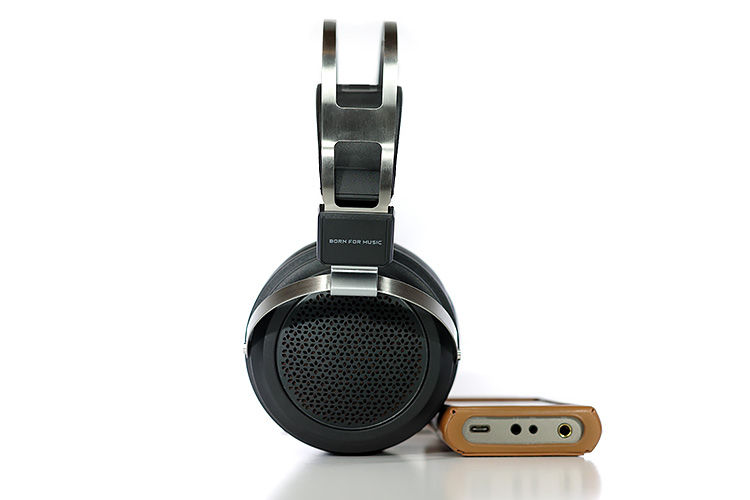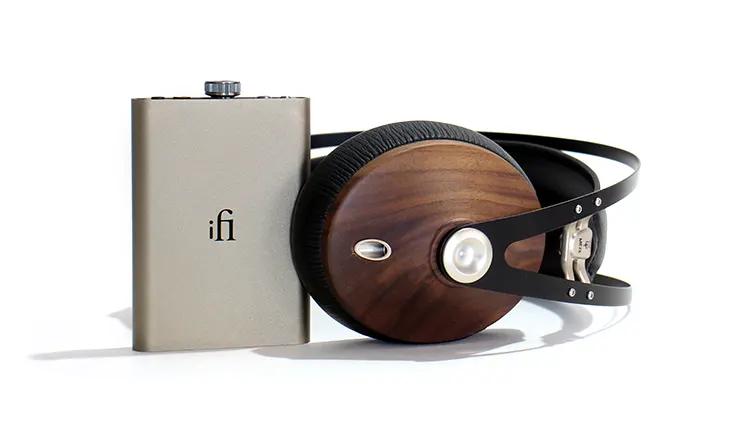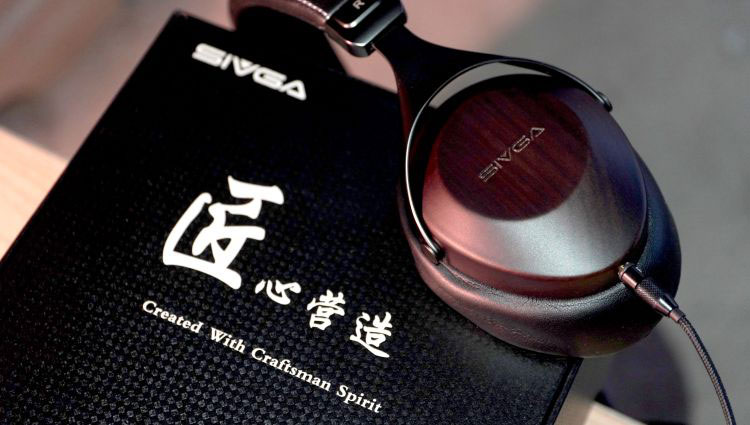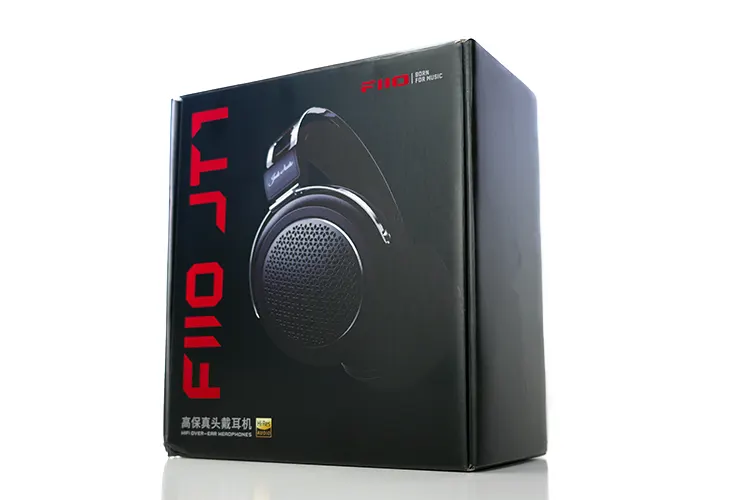Synergy
Efficiency
With an impedance of 32Ω and a sensitivity of 103 dB/Vrms (@1kHz), the JT1 is easy to drive. I had no problem raising the volume on any of the sources I used to drive the JT1.
The result is that I can get to quite loud levels quickly, but smoothly. I never felt there was a source that came across as too tightly controlled, making for abrupt volume changes. That smooth character carried over nicely.
Pairings
Easily driven by the Shanling M6 Pro, I found the pairing to be almost too complimentary in smoothness. Known for a laidback signature, when combined with the JT1, I found it to be good, but not my favorite pairing.
Mind you, I could easily raise the volume, what with the dual DAC Turbo mode, which gave good vibrancy to the sound, but it still comes across as too smooth, with a certain lack of details present.
On the MacBook Pro, streaming Tidal, the warm, rich signature Tidal is known for (at least in my iteration), again carried itself without much character, but a bit more so than the Shanling pairing.
I found I could raise the volume level to quite loud levels, but the booming low-end Tidal is known for coming through with too much girth in the notes. This made for a pairing, which would be used at home later, in the evening when winding down was needed.
The We Are Rewind pairing was more for my experiences than for true testing, using older Maxell XLII & TDK SA tapes. While I was able to raise the volume level to very adequate levels, the sound showed that the cassettes were of an “older vintage,” and quite possibly out of their realm.
Nonetheless, I thoroughly enjoyed the pairing as a trip down memory lane and could see this as a regular interlude.
By far my favorite pairing was with the Yamaha/Sony PS1 duo. Yes, the PS1 can be considered by some as only adequate as a CD player and too smooth.
However, the DAC inside the Yamaha countered that smooth character with the necessary vibrancy, which was missing on the other two. The JT1 felt right at home in my office setup this way.
Select Comparisons
Meze Audio 99 Classics
Technical
The Meze Audio 99 Classics transducer dynamic driver is smaller at 40mm, with a frequency response of 15Hz – 25KHz. The sensitivity of 103 dB at 1KHz, 1mW, and impedance of 32Ω make it slightly harder to drive. The 99 Classics is also a closed-back headphone.
Design
A secondhand set of 99 Classics is not something to pass up. And, as such it is included here for a slightly upward look into a closed-back headphone.
Attractive in looks and feel, the 99 Classics had stood the test of time with numerous iterations. Light even with the wood ear cups, the Meze is simply stunning in design (to me). Clamp pressure is just right, even with smaller cups than the FiiO FJT1.
The sub-suspension band provides just the right amount of pressure and fit. I did note it to be slightly higher in tension than the JT1, and as a result, the Meze rides further down on my head, but with less pressure below the ears.
Performance
An older headphone, the Meze Audio 99 Classics can be had new for a much higher price, and a used version can be had for a song. The subdued looks belie a presentation, that provides less sub-bass than the JT1, but with a bit of bloating and less control.
The mids come across as more in your face compared to the JT1 but are hindered by that emphasis down low. The drop at 3kHz makes for a bit more hollow region than the JT1’s smoothness, and the spike at 10kHz tries to counter that hole higher up. It does so well, sounding more musical than the JT1 overall.
A more even signature emanates from the FiiO Jade Audio JT1, which in this comparison is good. No spikiness means there isn’t as piercing a sound as the Meze has through the mid-treble to upper-treble region.
While not out of character in the Meze tuning, I did find myself reaching to lower the volume when solos came about such as an electric organ, or high guitar licks. Still a “classic,” and worth a look on the secondhand market.
Sivga SV021 Robin
Technical
SIVGA states that the 50mm dynamic driver of the Robin SV021 is a self-made, in-house production piece. Not outsourcing to another manufacturer gives Sivga the ability to monitor the R&D along with QC quite closely. Keeping the design and build in-house lends itself to some street cred.
The driver of the Robin SV021 is made of a polycarbonate blend with fiber, which the company says helps keep the background noise inaudible when no music or sounds are playing through the headphones. In other words, a black background.
I can attest that this is indeed the case. The headphones are quite quiet for a budget-tier closed-back headphone. The driver is 3mm thick adding strength to the material and robustness to the performance and driving potency.
The inner wiring is made of a copper composite material and aluminum. The diaphragm is also made in-house.
Design
The Robin SV021 is a closed-back wooden cup design, allowing little sound to leak into your listening experience. That exterior cup housing is made of gorgeous rosewood on the lighter-colored tan model.
The darker model color option is less lacquered in appeal. Both colors of wood are stunning regardless of choice.
The Robin SV021 headband is made of protein leather, along with the earpads, and underneath lays a nice metal band and connection pieces.
The headphones are well constructed and feel premium in the hand (much like all Sivga models) for only $149. The headphone also has detachable 2.5mm cable entries into each earcup.
Performance
The Robin SV021’s low-end appeal is one of variety. You get some solid oomph down low that can be boosted slightly with proper EQ but do not expect basshead levels.
It is suited for the task and perfect for budget-conscious audio enthusiasts to look awesome on a video call with good voice bass depth during the call. Everyone knows video call quality is not great, so having a little extra heft on the low end helps.
The Robin SV021 is not what I would call forward feeling in the physical presentation factor. I’d call it relaxed and a bit recessive, but the entire spectrum is recessive thankfully, not just the mids.
The Robin SV021 is not V-shaped at all, so that is a good thing. It is a mellow setup that is not overly distant and not overly forward and in-your-face sounding. This physicality factor is great for live recordings and ideal for podcasts and gaming.
Our Verdict
The FiiO JT1 dynamic driver closed-back headphones fit the intended niche quite well for a very affordable price. It delivers a bossy bass, laidback mids, and a non-grating treble making it ideal for a smooth listen for time-time headphone buyers.
The JT1 will not win any detail or clarity contests, but that is not the intended purpose. Rather the unoffending sound signature can be thought of as one, that will appeal to quite a broad market as opposed to the normal inclusions that come packaged with their Smartphones.
The FiiO Jade Audio JT1 is a good effort from FiiO, not the least of which is its value-added benefits, even with the abovementioned limitations.
FiiO JT1 Technical Specifications
- Headphone type: Closed-back over-ear dynamic driver
- Frequency response: 15Hz-30kHz
- Impedance: 32ohm
- Sensitivity: 103dB/Vrms (@1kHz)
- Cable material: OFC (oxygen-free copper)
- Cable length: About 150cm
- Weight: About 355g (excluding cable)
- Headphone connector: Dual 3.5mm TRS





